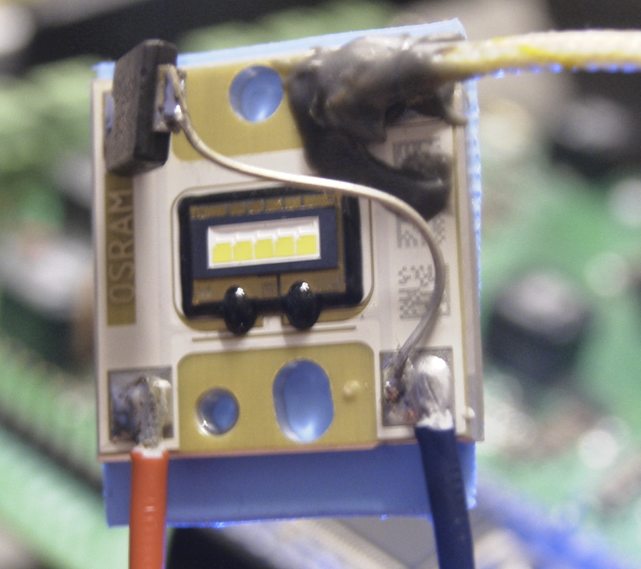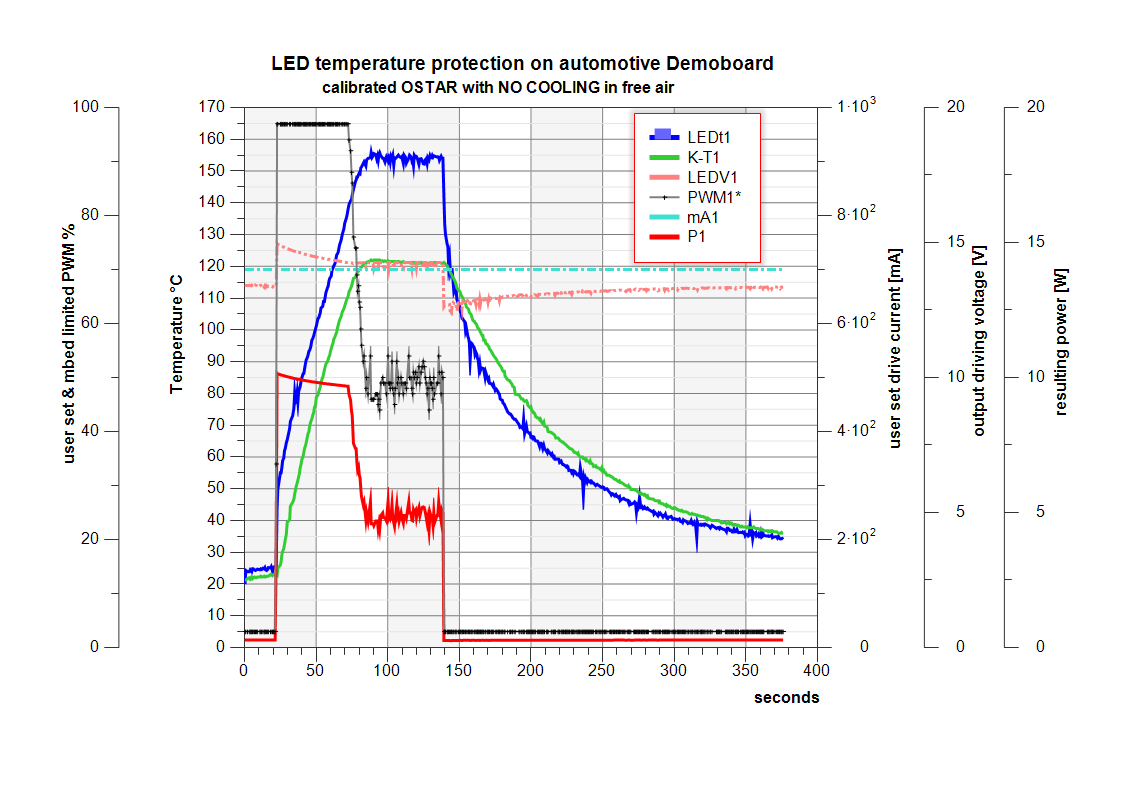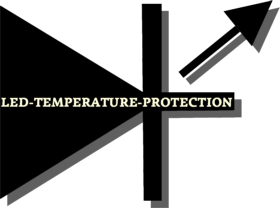LED Temperature Protection shall keep the LED alive when there is high temperature and you may exceed the junction temperature.
So if you power an LED which has no cooling active - for example if it was forgotten to mount it on a cooling block or the thermal contact was removed, like it is shown below - it will soon overheat under high power and the LED will be damaged.

Automotive OSRAM LED with a mounted reference K-thermal sensor on top right.
This LED was operated with no cooling mounted.
But not if you have our method integrated into your design as the following chart is proving:

LED temperature protection regulates back the LED at about 153°C junction temperature.
The temperature protection is effective even if an LED is connected, which was not callibrated with an external reference:
There are - due to manufacturing tolerences of the LED chips and possible aging effects - different forward voltage classes within a LED series present.
If such different LEDs are connected to the system there are due to the voltage class different temperature offsets present!
The problem is solved by analysing the relative rate of the voltage decrease at the measruement point. This value is constant and not changed at different temperatures.
So the method can sense at any time what type of LED is currently in operation and adopt automatically the calculation parameters on it.
This clears the way for automotive and consumer applications to hook "unknown" LEDs to a driver and use them as a sensor.
